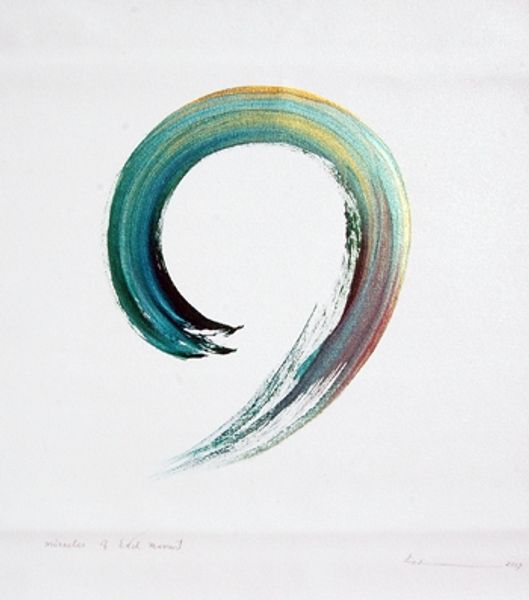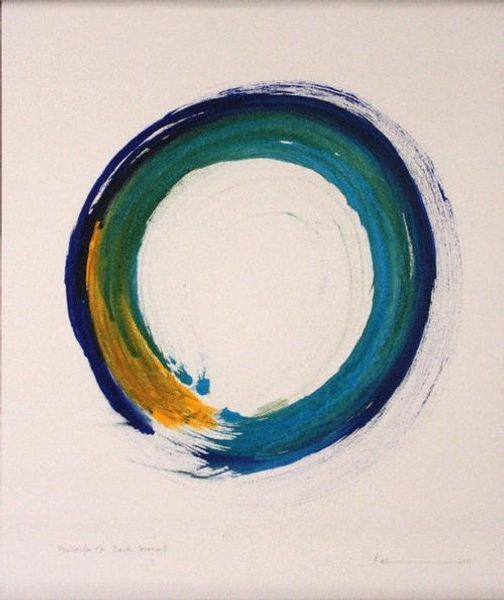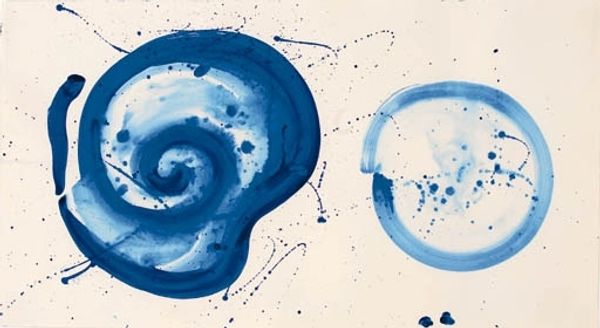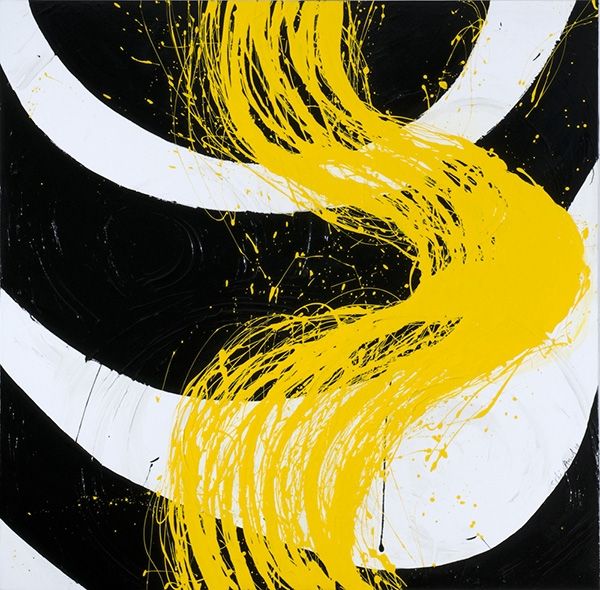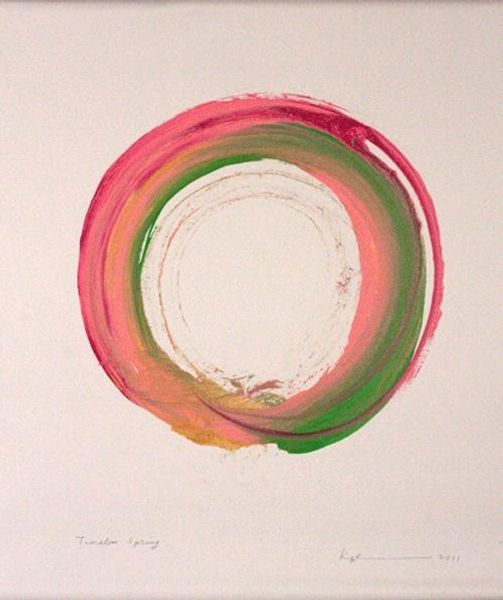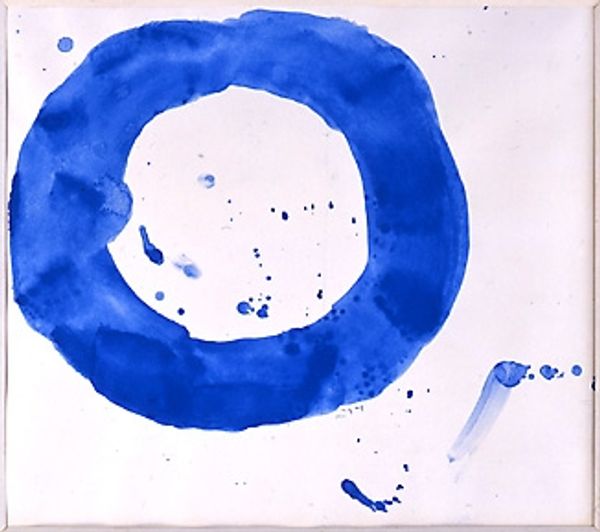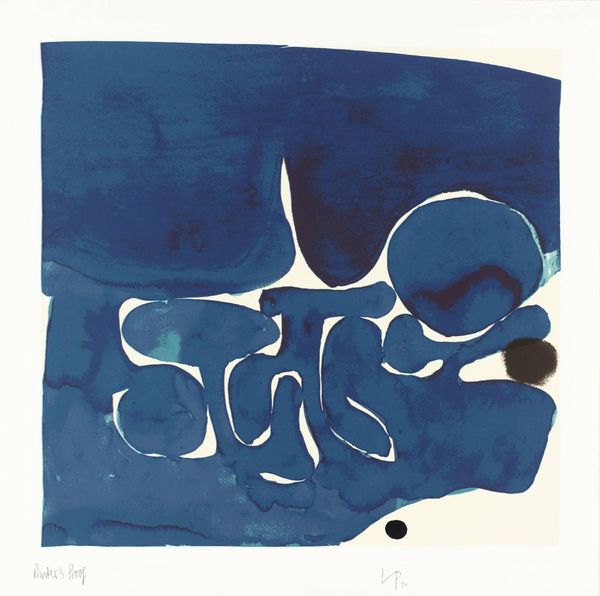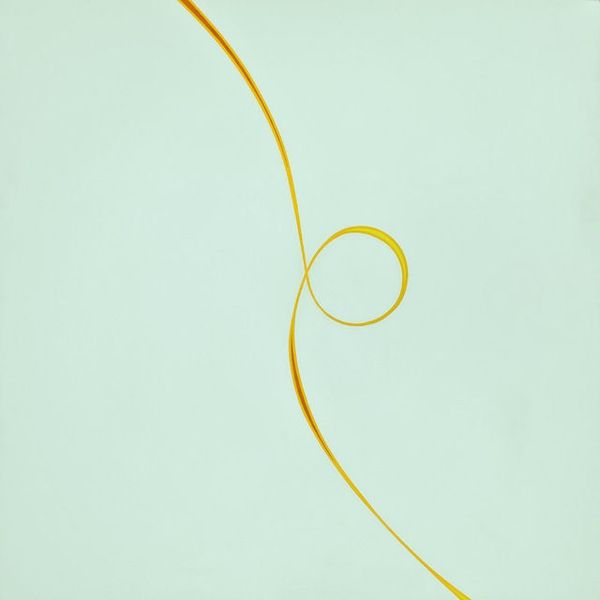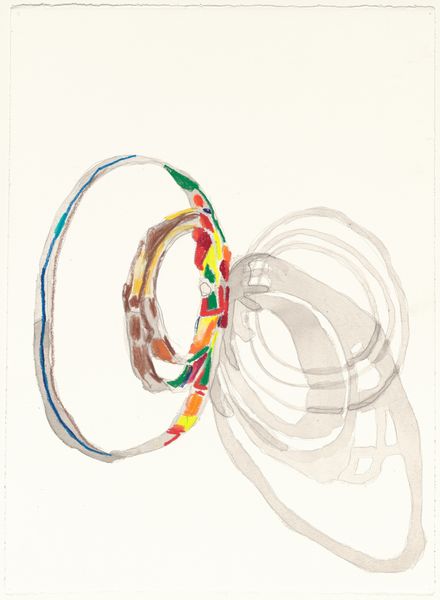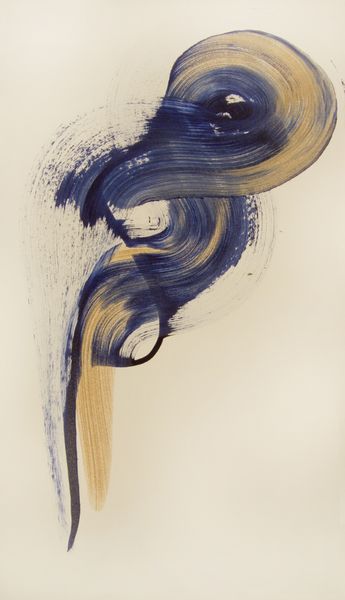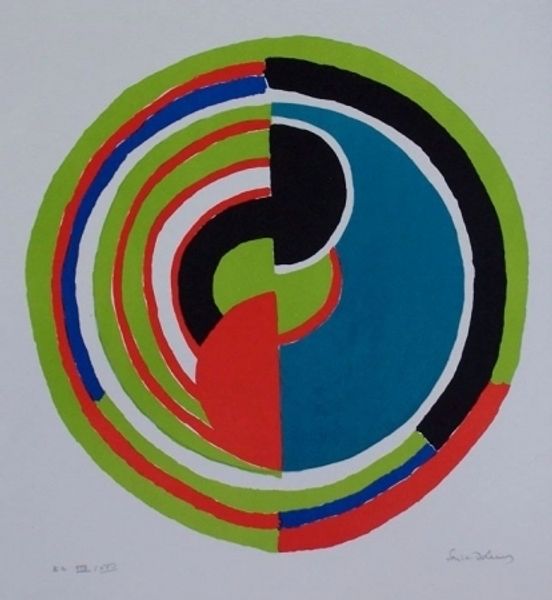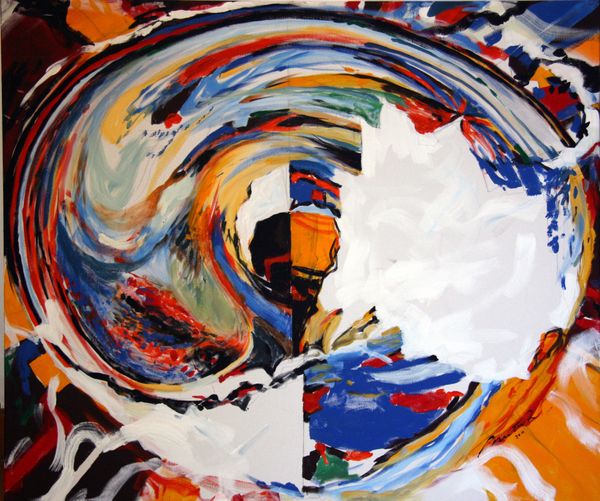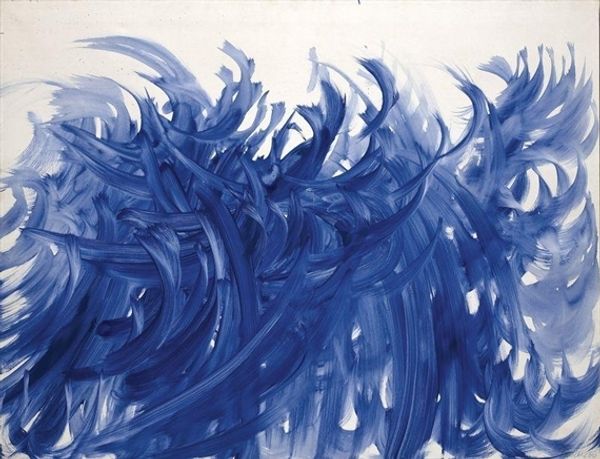
acrylic-paint
#
abstract-expressionism
#
acrylic-paint
#
form
#
acrylic on canvas
#
geometric
#
paint stroke
#
abstraction
#
line
Copyright: Kazuaki Tanahashi,Fair Use
Editor: This piece is called "delete," made with acrylic paint by Kazuaki Tanahashi, although it’s missing a date. It's really dynamic, with this swirling blue form contrasting with the white space. What do you see in this work? Curator: Immediately, I'm drawn to how this abstract piece, through its bold circular form, engages with the concept of "wholeness," referencing the Zen Buddhist concept of the "enso." What socio-political anxieties do you think artists like Tanahashi were responding to through pared-down expression and an appeal to pre-modern, anti-rational, Eastern traditions? Editor: Well, I'm not sure, but I guess I assumed the form was more about formal abstraction than political anything. It's a simple, elegant gesture. Curator: And yet, this 'simple gesture' could also represent a rejection of Western art's established canons and a search for alternative forms of visual expression. It certainly resonates with a broader critique of Western epistemology. Does the concept of 'decolonizing the gaze' resonate here? Editor: Hmm, interesting. So you are saying, even in its simplicity, this form implicitly challenges dominant cultural narratives by referencing non-Western aesthetics and spiritual concepts. Curator: Precisely. What can an aesthetic of apparent deletion—of reduction—tell us about resistance to dominant forms, especially at a time of increasing globalization and cultural homogenization? Is it an effort at radical aesthetic inclusivity? Editor: I never thought about it that way. It reframes the entire work; what I considered purely formal suddenly takes on cultural and even political weight. Curator: It’s a powerful reminder that even seemingly abstract forms can be deeply embedded within broader historical and cultural contexts, revealing subtle acts of cultural defiance and reclamation.
Comments
No comments
Be the first to comment and join the conversation on the ultimate creative platform.
